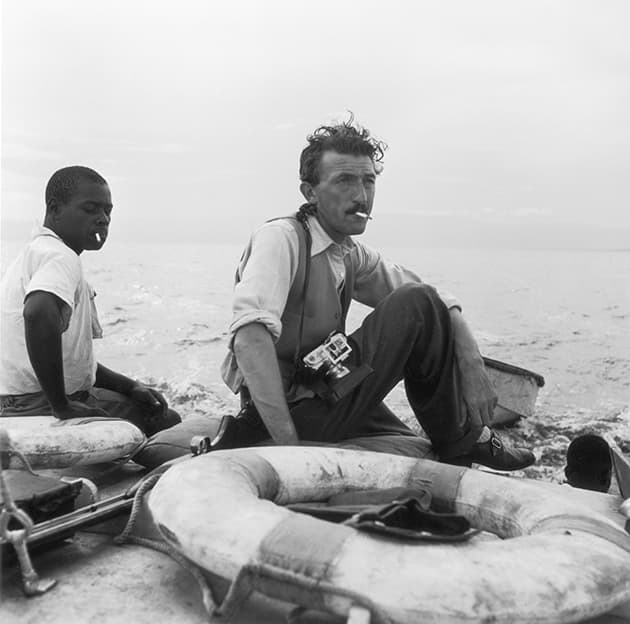[Photo credit: Getty Images]
Hopkins joined the RAF photographic unit when war broke out and bought his first Leica while serving in Italy – describing it as ‘the first camera I can recall handling without a certain feeling of distaste’.
Matthew Butson, vice-president of Hulton Archive, said he last met Thurston over the summer when he was in ‘fine fettle’.
He said news of the photographer’s death came as a shock, even at the age of 101.
Paying tribute, Butson told AP: ‘The man had no trace of an ego – a lovely person, very warm, very intelligent and what he didn’t know about art was not worth knowing.
‘He wanted to be a graphic illustrator but the camera paid more than the brush.’
Butson said Thurston was never a great ‘self-publicist’ and so was not seen in the same circles as fellow Picture Post photographer Bert Hardy, for example.
Born in 1913, Thurston trained as a magazine illustrator at Brighton College of Art in East Sussex.
Hopkins’ career as a Fleet Street photographer dates back to 1930.
‘However, the cliché ridden imagery and ruthless tactics required by successful press photographers of the period didn’t satisfy his creative mind and, disillusioned, he returned to his home town to set up his own photographic business,’ states a Getty Images biography.
Hopkins freelanced for newspapers and magazines across Europe after the war, working for Picture Post from 1949. He became a Picture Post ‘staffer’ in 1951, travelling the world on his reportage assignments.
‘Thurston’s photographs are marked by his sensitive and creative approach, creating first-class records of the human condition,’ adds Getty.
He lectured in photography after a career in advertising during the 1960s.
Thurston Hopkins is survived by his wife Grace Robertson, who is also a former Picture Post photographer.

Photo credit: Getty Images








